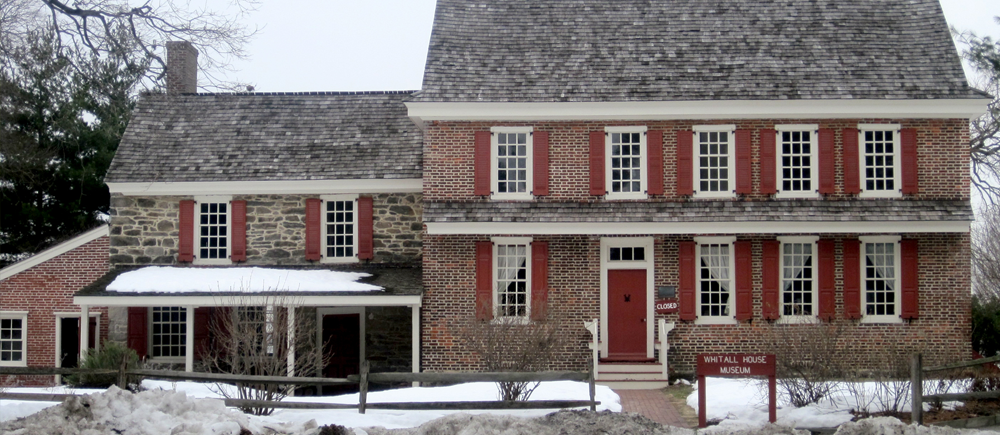Red Bank History
Red Bank History
History of the Red Bank Archaeology Project
Red Bank Battlefield Park is a 44-acre park located on the banks of the Delaware River in National Park. Best known for the Battle of Red Bank on October 22, 1777, the park is home to the remains of Fort Mercer, two Revolutionary War monuments, and the 1748 Quaker homestead, the Whitall House. In the eighteenth century, the Whitall family called Red Bank home. They established a 400-acre plantation known for its fruit orchards. The family saw considerable financial success until the spring of 1777 when the property caught the Continental Army’s attention. Red Bank occupied a bluff overlooking the Delaware River--the perfect site for a fort to protect Philadelphia. The army seized the property and constructed Fort Mercer which served as a critical river fortification during the British occupation of Philadelphia. Defending the fort in October of 1777 was the Rhode Island Regiment led by Colonel Christopher Greene. What made this regiment remarkable was that it was integrated--African American, Native American, and white soldiers fought side by side under Greene’s remarkable leadership. General George Washington wrote to Greene, “The post with which you are entrusted is of the utmost importance. . . The whole defense of the Delaware absolutely depends on it.”
The Philadelphia Campaign of 1777 is remembered for incredible demonstrations of American tenacity and fortitude. When Philadelphia fell to the British in September of 1777, they turned their eyes to the river for much needed supplies. Hessian troops, led by Colonel Emil Von Donop, attacked Fort Mercer on October 22. Hired by the crown to supplement the British fighting force, the Hessians were the world’s premiere fighting force of the eighteenth century. A brutal forty-five minute battle ensued. It was an unexpected and staggering Hessian loss with just under 300 dead or injured.
Today, Red Bank Battlefield Park and the historic Whitall House are maintained by Gloucester County’s Department of Parks and Recreation. The park is open every day from dawn to dusk. Each year over 200,000 visitors enjoy views of the Delaware River, picnic pavilions, playgrounds, and historic programming. From April to October the park offers educational programs including hearth cooking demonstrations, battle reenactments, children’s camps, and public archaeology days.




